Click on the post to check out one of the most comprehensive trope guides out there. Not only does it explain what are tropes in books, it also lists out ALL of the tropes and give multiple excellent book recommendations for each trope if you want to read any!
Hover to save it to save it to your board so you can look back on it later!
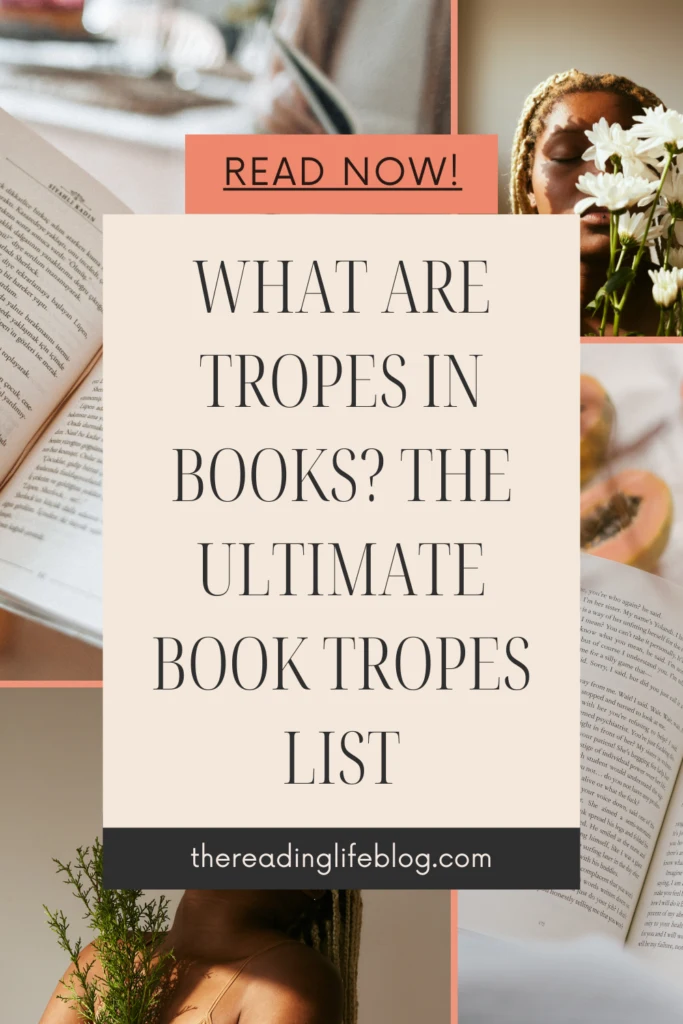
What is a Trope in Books?
At its core, a trope refers to a conventional or recurrent theme or device used in storytelling. Tropes can be found in various forms of media, including literature, film, television, and even video games. They encompass a wide range of narrative elements such as character archetypes, plot devices, symbols, settings, and dialogue patterns.
Tropes as storytelling tools
Tropes serve as storytelling tools that enable creators to communicate with their audience in a familiar language. By employing tropes, writers and filmmakers can tap into shared cultural knowledge, established conventions, and expectations that audiences have developed over time. These narrative patterns allow creators to convey information efficiently and evoke specific emotions or responses from their audience. By using this trope, authors and filmmakers can guide audiences through a familiar narrative structure, engaging them emotionally and satisfying their desire for a satisfying story arc.
Types of Tropes
Tropes can be categorized into various types based on their function, theme, or narrative purpose. Here are a few common categories of tropes: Plot Tropes, Plot Tropes, Character Tropes, Setting Tropes, and Setting Tropes.
Plot Tropes
Plot tropes encompass recurring narrative devices and structures that shape the overall storyline. These tropes can include common plot elements like the hero’s journey, the quest for revenge, or the mystery with a twist ending. Plot tropes establish a foundation for storytelling, providing a roadmap for the development of conflict, resolution, and character arcs. They tap into the audience’s expectations and familiarity with established narrative structures, offering a sense of comfort or anticipation as the story unfolds. The following are examples of some of the most popular plot tropes out there.
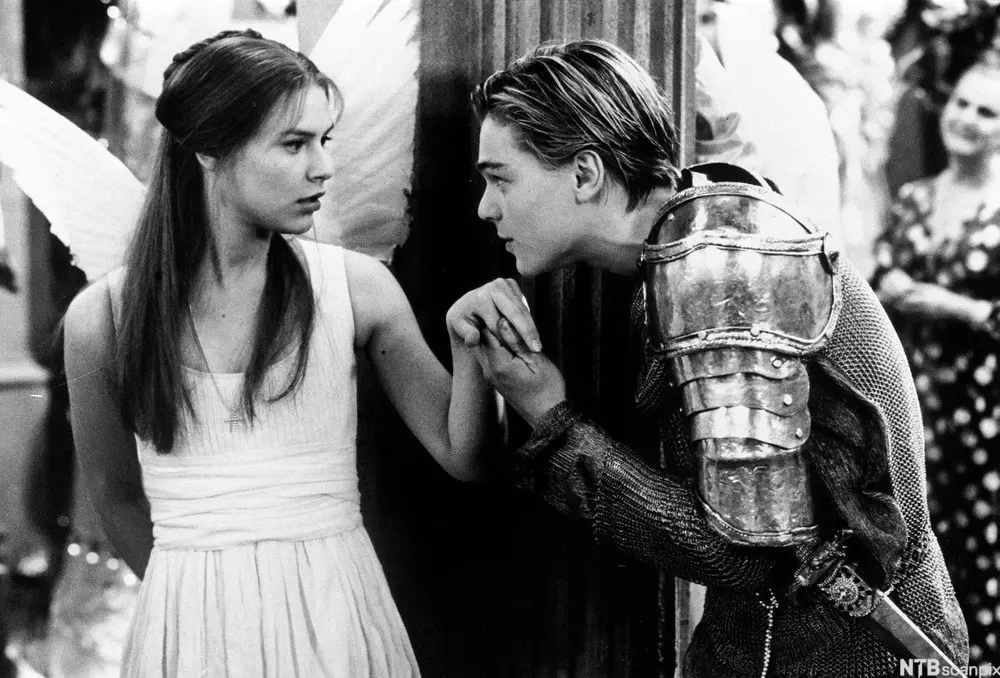
The Forbidden love trope
The forbidden love trope revolves around a romance that faces significant barriers or obstacles, such as societal norms, family opposition, or conflicting circumstances. The allure of forbidden love lies in the tension and longing created by the characters’ forbidden desires.
Books with this trope:
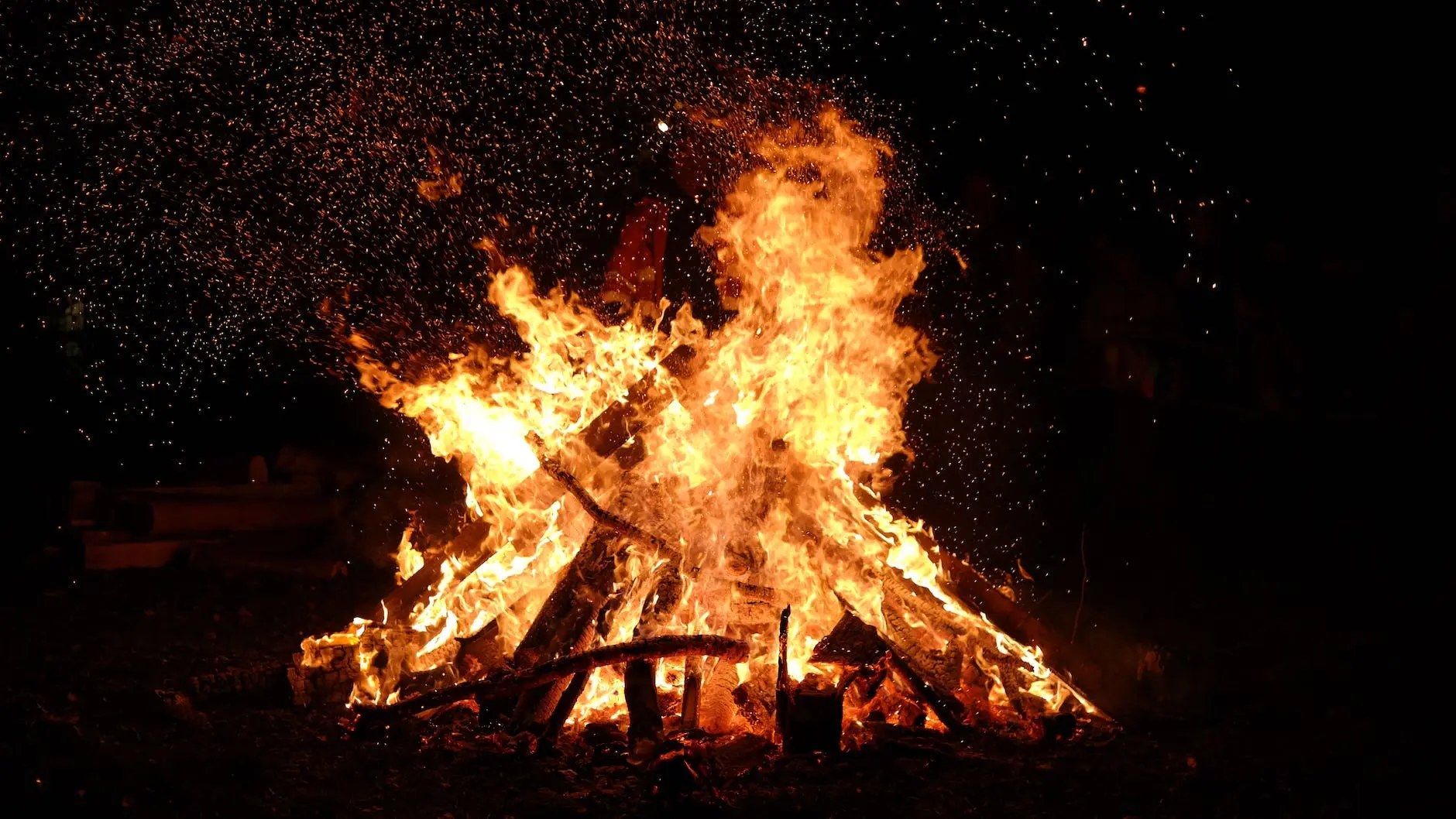
Slow Burn trope
The slow burn trope emphasizes the slow-paced and gradual development of romantic feelings between the main characters. This trope focuses on building anticipation and emotional depth, allowing readers to savour the journey of the characters’ relationship.
See also:
- BOOKS WHERE THE FMC ACTUALLY DIES (BEFORE COMING BACK) AND THE HERO GROVELS IN THE PROCESS
- BOOKS WITH THE “I HATE EVERYONE BUT YOU TROPE”
- BOOKS WITH THE “WHO DID THIS TO YOU” TROPE
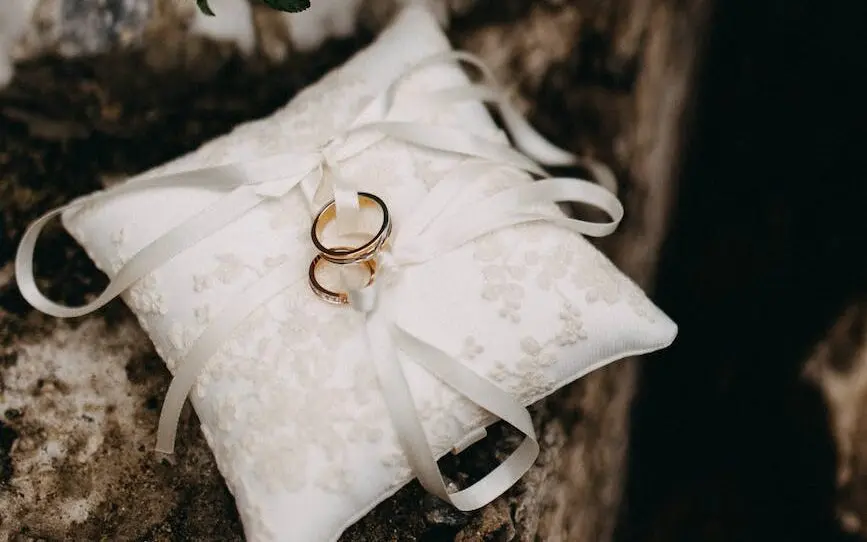
The Marriage of Convenience Trope
The marriage of convenience trope involves characters entering into a marriage for practical or strategic reasons, rather than love. Over time, these marriages often evolve into genuine emotional bonds as the characters navigate the complexities of their arrangement. Note it can sometimes be grouped together with the “fake dating trope”, due to the similarities between the tropes.
Fake marriage:
- Radiance by Grace Draven
- A Deal with the Elf King by Elise Kova
- The Bridge Kingdom series by Danielle L. Jensen
Fake dating:
- To All the Boys I’ve Loved Before by Jenny Han
- The Deal by Elle Kennedy
- The Wall of Winnipeg and Me by Mariana Zapata
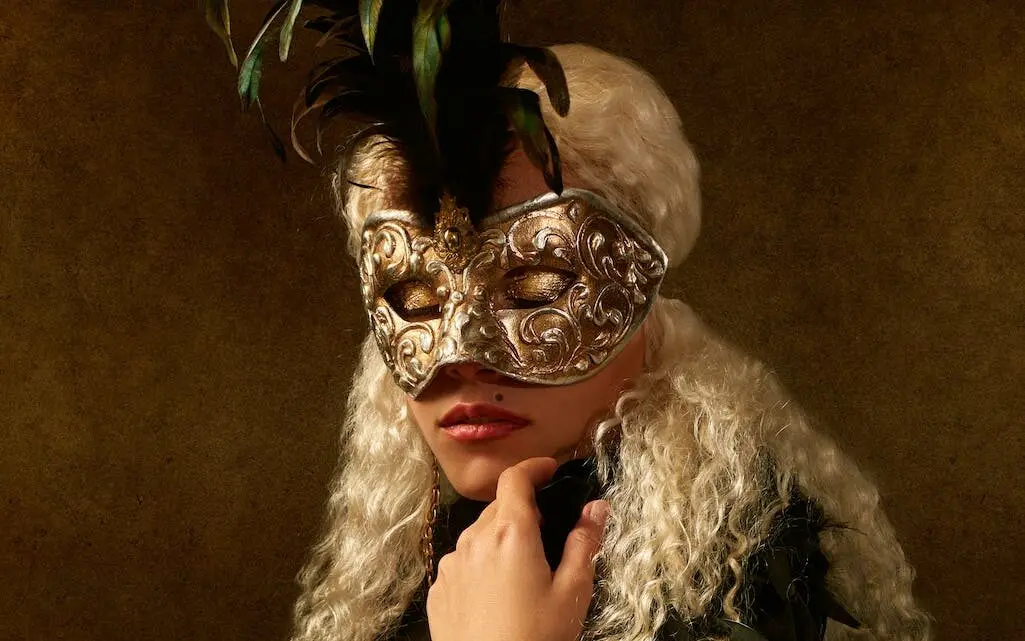
The hidden identity trope
The hidden identity trope revolves around characters who conceal their true identities, leading to unexpected revelations and dramatic tension in their relationships. This trope often adds an element of mystery and suspense to the story.
See also:
- Throne of Glass series by Sarah J. Maas
- Cinder by Marissa Meyer
- The False Prince by Jennifer A. Nielsen
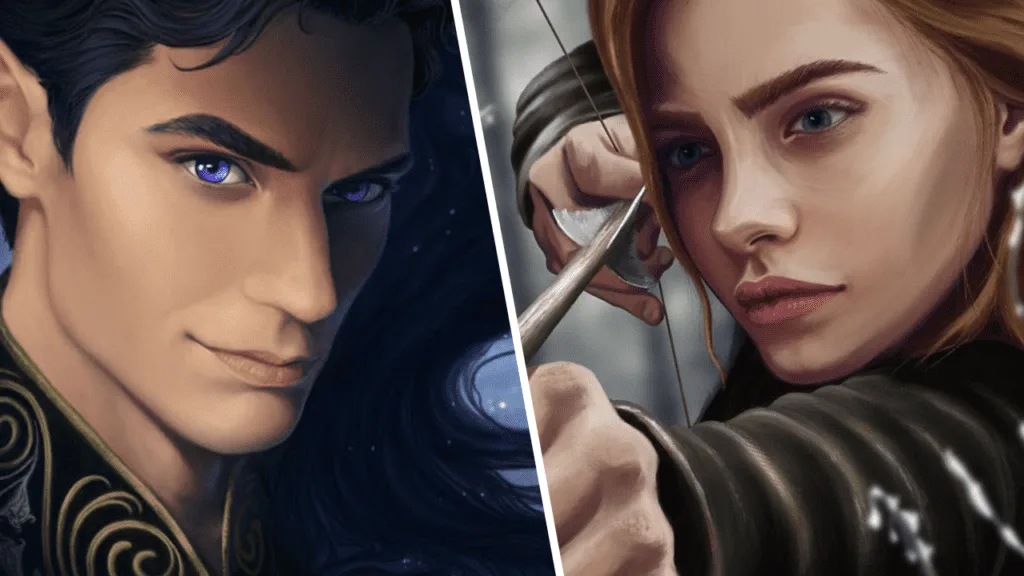
The fated mates trope
The fated mates trope is commonly found in paranormal or fantasy romance novels and involves characters who are destined to be together due to supernatural or otherworldly connections. This trope explores the notion of predestined love and soulmates.
Books with this trope:
Character Tropes
Character tropes involve recurring archetypes that shape the personalities, motivations, and roles of the individuals within a story. These archetypes can range from the hero or the villain to the wise mentor or the love interest. Character tropes provide a framework for understanding and identifying the traits and behaviours of the characters in a narrative. They establish familiar patterns that audiences can recognize and relate to, allowing for quicker engagement and connection with the story’s cast.
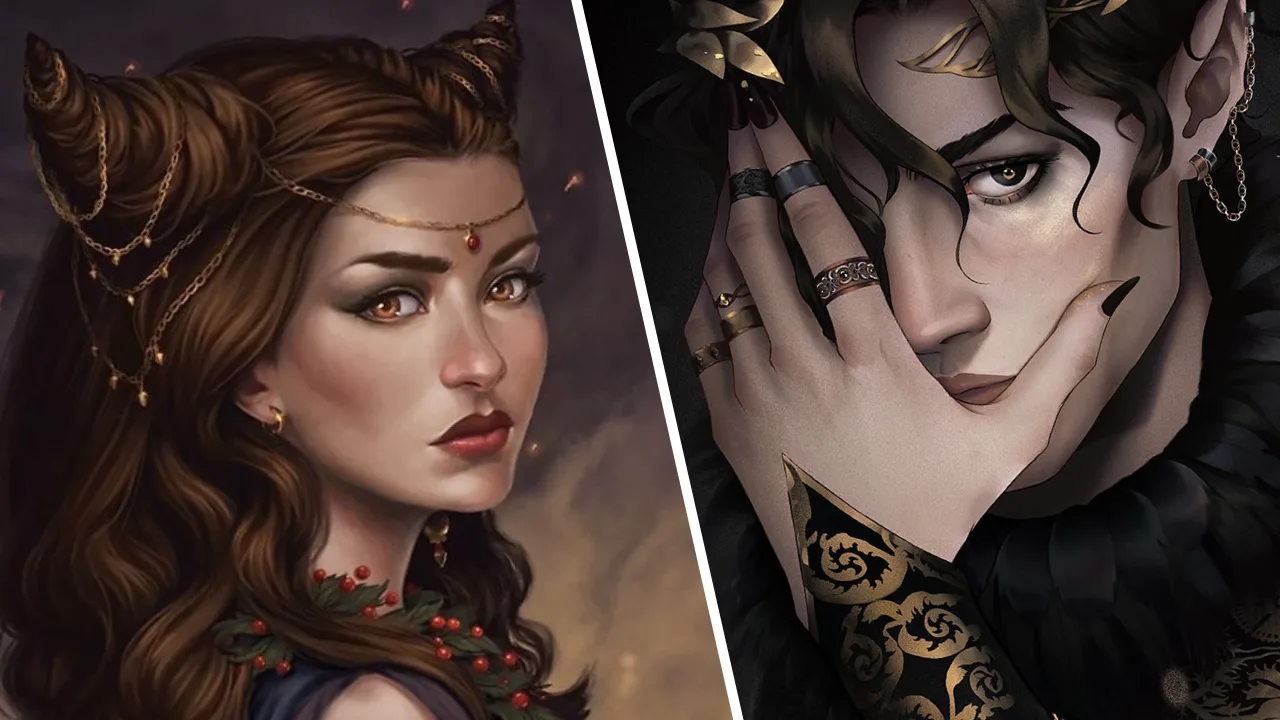
Enemies to Lovers trope
The enemies-to-lovers trope revolves around two characters who initially despise or hold animosity towards each other, only to find themselves gradually falling in love. This trope often involves witty banter, intense conflict, and a slow-burning romantic tension that builds over time.
See also:
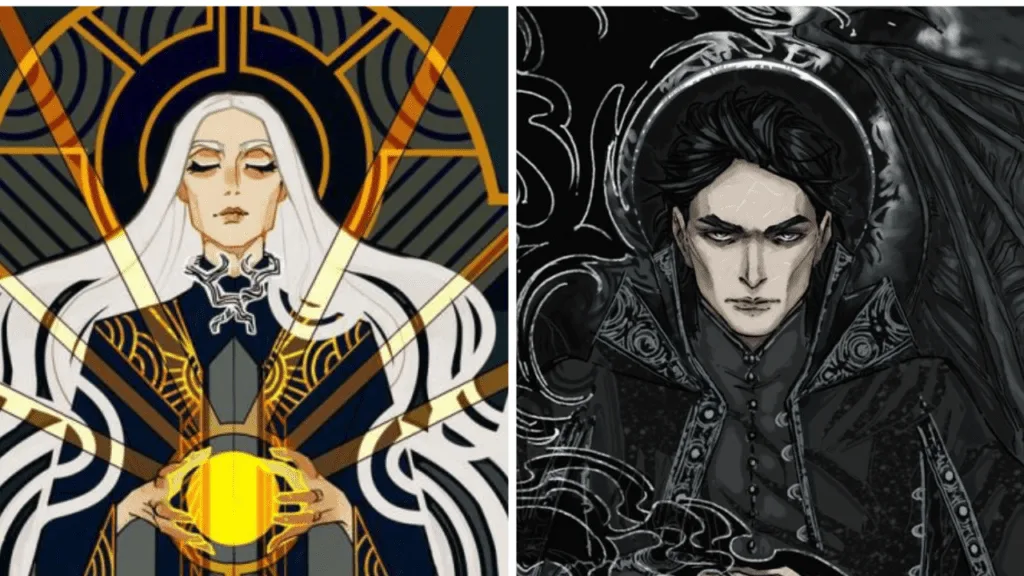
The opposites attract trope
The opposites attract trope centers around two characters with contrasting personalities, backgrounds, or interests who find themselves irresistibly drawn to each other. This trope explores the dynamics of how differences can create compelling romantic chemistry.
Books With This Trope:
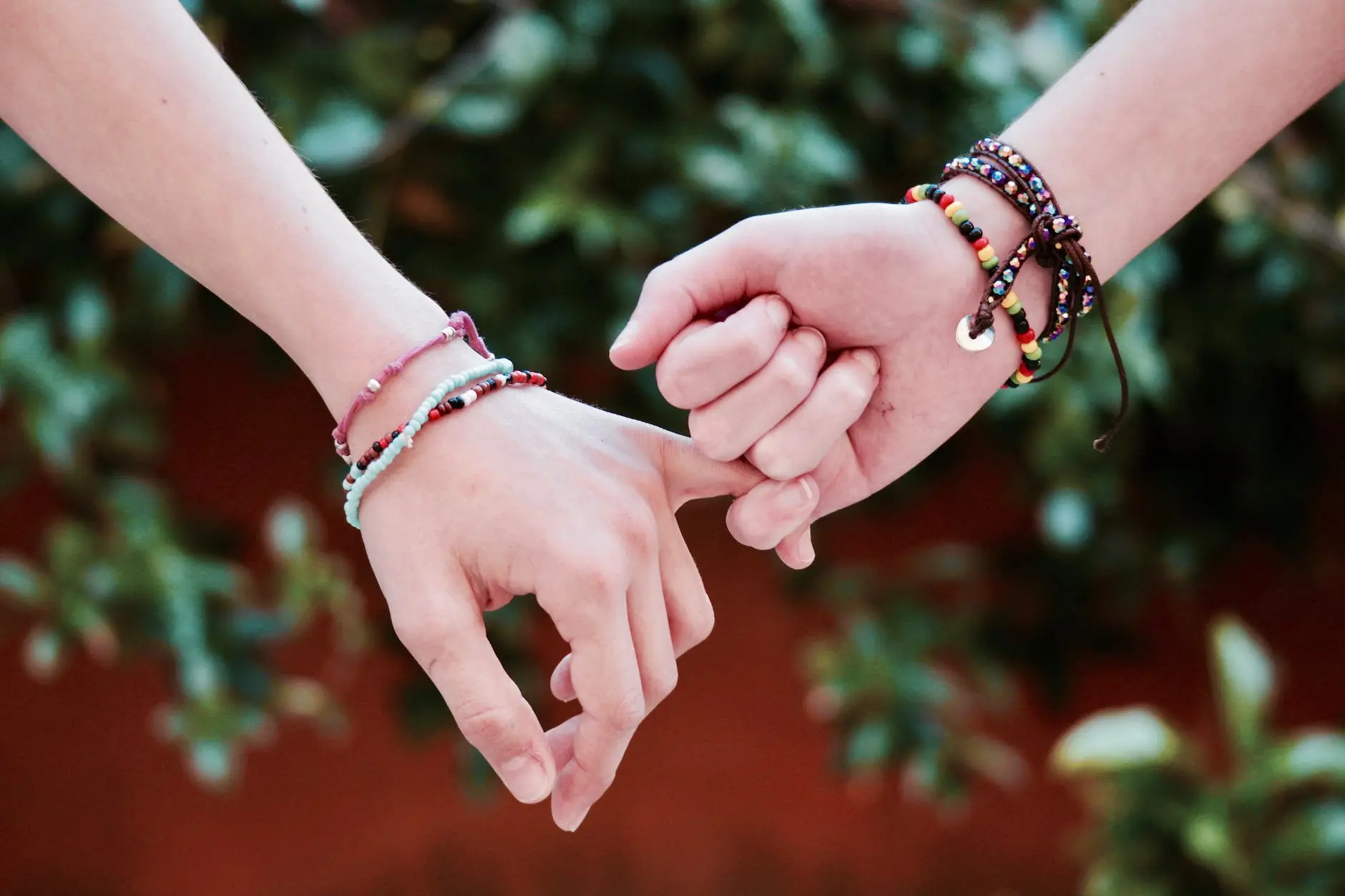
The friends to lovers trope
The friends-to-lovers trope focuses on characters who start as close friends and gradually realize their romantic feelings for each other. This trope emphasizes the importance of a strong foundation of friendship as a basis for a deep, lasting romantic connection.
Books With This Trope:
- Eleanor & Park by Rainbow Rowell
- People We Meet on Vacation by Emily Henry
- Blurred Lines by Lauren Layne
Setting Tropes
Setting tropes involve recurring elements associated with specific locations, time periods, or genres. They help establish the atmosphere, mood, and context within a story. Examples of setting tropes include the haunted house, the post-apocalyptic wasteland, or the magical school. These tropes provide a recognizable backdrop that can shape the tone of the narrative and evoke certain emotions or themes. They contribute to world-building and can act as a shorthand for conveying information about the story’s environment to the audience.

The One Bed Trope
The one-bed trope involves two characters who find themselves sharing a bed due to various circumstances, such as limited accommodations or unforeseen events. This trope often leads to intimacy, vulnerability, and heightened romantic tension.
Books with this trope:
- The North Wind by Alexandria Warwick
- Bound to the Battle God by Ruby Dixon
- A Court of Thorns and Roses by Sarah J. Maas
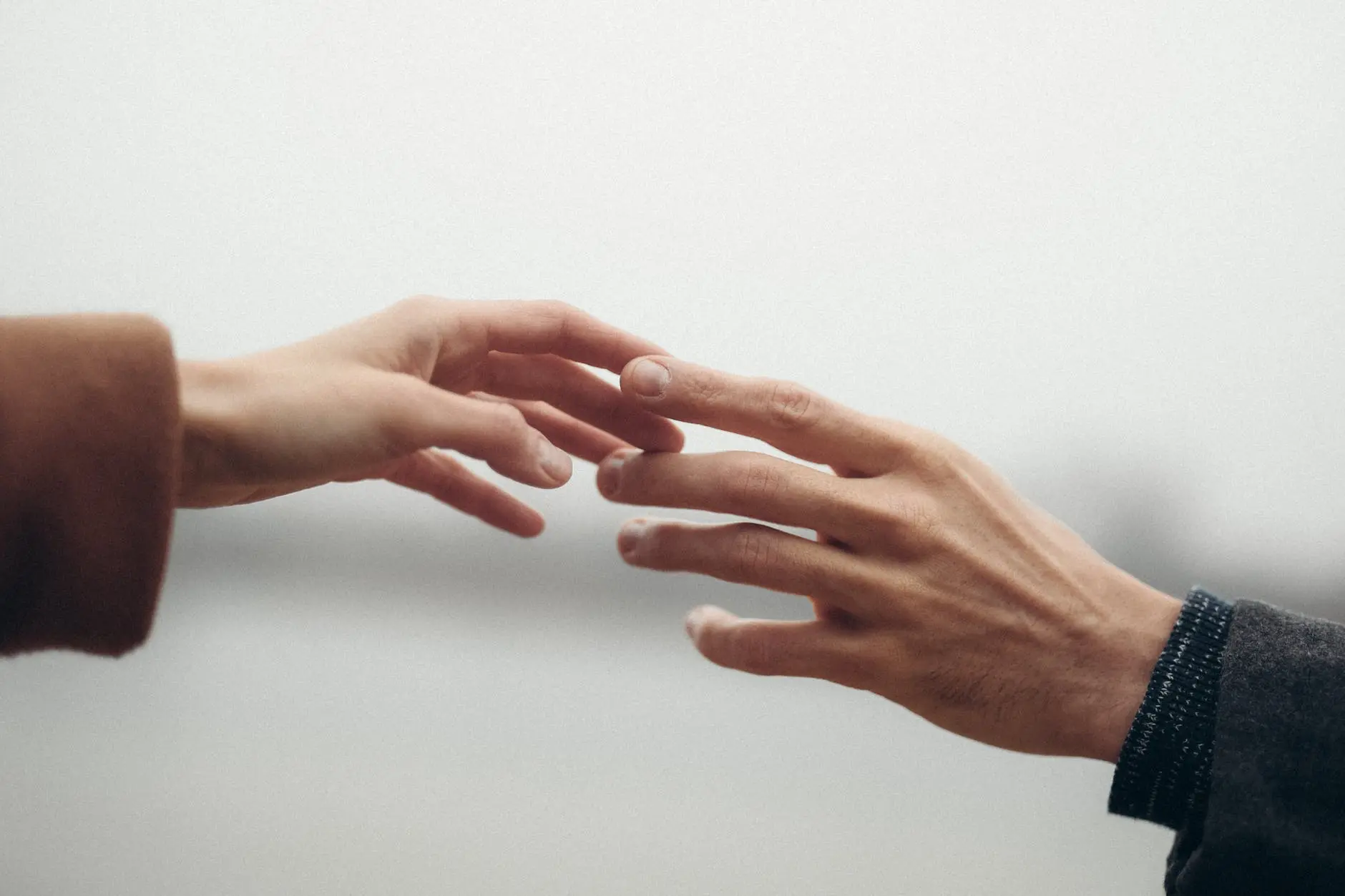
the forced proximity trope
The forced proximity trope brings two characters together in a confined space or situation, forcing them to spend significant time in each other’s company. This close proximity fosters emotional connections and allows for the exploration of their relationship.
Books with this trope:
- Polaris Rising by Jessie Mihalik
- We Hunt the Flame by Hafsah Faizal
- Bound to the Battle God by Ruby Dixon
THE POWER OF SUBVERTING TROPES
While tropes are valuable storytelling tools, they can also become clichéd or predictable if overused. This is where subverting tropes come into play. Subversion involves deliberately defying or deviating from established tropes to create unexpected and refreshing narratives. It challenges audience expectations and can lead to innovative and thought-provoking storytelling. When creators subvert tropes, they introduce twists, unconventional character arcs, or unexpected plot developments that defy traditional conventions. By doing so, they can create memorable and groundbreaking works that push the boundaries of storytelling.
Book tropes serve as storytelling tools that enable authors to create compelling narratives, emotional connections, and familiar patterns that resonate with readers. The aforementioned examples of popular book tropes in YA and NA romance novels provide a glimpse into the diverse themes and dynamics that captivate readers and keep them engrossed in the world of literature. So, whether you enjoy enemies turned lovers, slow-burn romances, or any other trope, there’s a vast array of books waiting to transport you into captivating stories of love, passion, and connection.
Hover to save it to save it to your board so you can look back on it later!
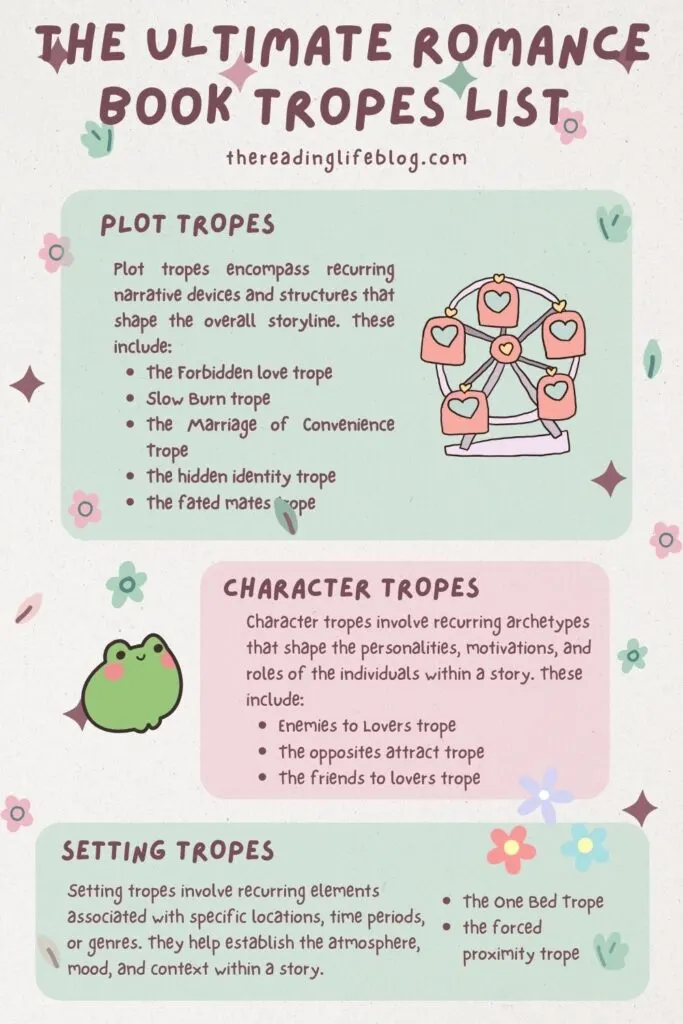





As many readers may know (especially romance book readers), oftentimes we like to seek out book tropes and read romance books that include the book tropes we usually like and the book tropes we want to read at the moment. It’s what drives a lot of book recommendations and is a common way we seek out books to read.
If you are a reader who is interested in:
- Tracking tropes that you have already read
- Tracking tropes that you would want to read in the future
- Collect original trope ideas that you came up with (and haven’t come across before)
Then this book trope reading journal is perfectly made for you!
Please subscribe to my mailing list to get a FREE colouring book, and follow me on my social media accounts if you want more posts like this! I really appreciate the support <3.
